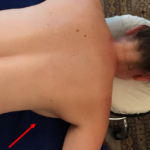A Spa Business Must Have an Effective Client Survey
January 31, 2025

In order to perpetuate a team culture invested in sexual assault prevention, where a business and its clients can stay safe, a spa business must have an effective client survey. No one except the client and the massage therapist can know what’s happening in the treatment room, which means businesses must get that information directly from their clients or their practitioners.
They can do this with client surveys, where a spa provides clear questions for a client to complete in their own time. And in combination with a successful secret shopper program, to be covered in the future, spas can glimpse into the treatment room and monitor their practitioners for inappropriate or predatory behavior.
However, clients are often reluctant to give feedback. If a client has a great session, they usually have no trouble telling you about it. But if a client has an uncomfortable or sexually inappropriate experience, it is often very difficult for them to come forward without encouragement.
Creating a clear pathway for feedback, good or bad, is essential, so how should a spa provide a welcoming environment for client feedback?
Why Should Every Spa Have a Client Survey?
The first step is to start with why a client survey is beneficial. The ultimate goal of the client survey is to uncover therapists who tend to break the rules and cross boundaries, who can then be terminated or retrained depending on the severity of the claim. On a more positive note, these surveys can also be used to celebrate and recognize outstanding service.
For client surveys to be effective, though, they must be done in a certain way. The introduction to the survey must clearly state two things: 1. the company wants clients’ unvarnished, honest answers; and 2. the only way to have a safe, healthy environment is to ensure everyone is treated with care and respect. Giving context to the surveys increases the likelihood of survey completion.
When a client checks in, the front desk staff should ask the clients to fill out the survey and stress that it’s important because of the reasons stated above. Without this in-person conversation, clients are more likely to ignore the survey, especially if their only exposure to it is through an after-session email.
Must-Have Massage Client Survey Questions
Next, the survey must be short, with 8 to 10 questions. In addition to the usual questions about the facility and scheduling, there must be three or four about their experience with the therapist, like the following:
- Is there anything you particularly liked or disliked about how your massage therapist worked?
- Did anything happen in the massage session that made you feel uncomfortable? If yes, please explain.
- Did the massage therapist do or say anything you thought was inappropriate? If yes, please explain.
Asking questions with these targeted keywords encourages clients to reflect on their session and to share about any negative experiences, whereas a general question about how the session went may only solicit positive or neutral feedback.
If a business shies away from the possibility of receiving negative feedback, they are shying away from improvement and safety.
Four Successful Strategies for Submitted Surveys
In addition to telling a client about the survey at check-in, here are four other strategies that organizations do that increase the rate of their completed surveys:
- Encourage clients to complete the survey in the waiting area after their session
- Send surveys by email after the first session and every two to three months for regular returning clients
- Offer something of value as an incentive, e.g., credit on the client’s account, a product discount, etc.
- (Mostly for larger companies with more resources and staff) Use a management service to scan surveys for 20 or so keywords, such as uncomfortable, creepy, inappropriate, weird, etc.
- Words like this alert the company to the possibility that something inappropriate may have happened. When therapists who may have inappropriately crossed boundaries are flagged, the spa can immediately act to protect future clients.
Ineffective and Unhelpful Surveys
Some companies have ineffective, unsubstantial surveys either because they are unaware of more productive questions or because they are merely checking a box so that they can say they have surveyed their clients. Unsuccessful surveys ask fewer questions: what was your experience like, and would you recommend our services to a friend? These types of surveys do not encourage a response and do not probe for inappropriate therapist boundary crossings and violations. Many clients do not even bother completing them.
Reminder: Sexual Assault Is Traumatic
Sexual misconduct in a massage session is traumatic. The client often goes into shock, freezes, and says nothing. Afterward, they often feel embarrassed, humiliated, ashamed, guilty, and angry at themselves for not being able to stop the assault. Some clients come forward immediately, some within a few weeks, but it may take others years. The truth is that 70 to 80% of all sexual assault victims never come forward.
Having a robust survey that encourages people to give honest feedback is just one is way to provide a safe experience to clients and guests. If people are encouraged to give feedback in a sincere and honest manner, the likelihood of them coming forward is much greater.
If you’re a lawyer who is currently involved in a sexual assault case and needs an expert witness with a massage or spa background, schedule a conversation with Dr. Benjamin.
Ben E. Benjamin holds a Ph.D. in Sports Medicine and has been an expert witness in cases of sexual assault in a massage/spa setting since 2004, advising lawyers, testifying in depositions and trials, and writing reports. His expertise extends beyond massage therapy and ethical behavior. He also advises spas, both large and small, on the creation of comprehensive sexual assault prevention strategies that ensure safe and ethical practices in the industry.
Related Posts

Expert Witness Insight: Sexual Assault and Poor Draping in Massage Therapy
What is Draping in Massage Therapy? Draping in massage therapy means securely covering the body with a sheet, blanket, and/or towel so that the private areas of the body are covered, feel safe, and are not ever exposed. These areas include the genitals, the female breasts, and the lower buttock, where the gluteal cleft is, […]

How High is Appropriate to Massage on the Upper Inner Thigh?
How High on the Upper Inner Thigh to Massage? The upper inner thigh is one of the gateway areas where predator massage therapists begin their sexual assault. The thigh should be draped so that the pelvis and the inner thigh are securely covered. The drape is generally a sheet tucked under the thigh and […]

Expert Witness Insight: When Massage Therapists Work on the Buttocks
When massage therapists work on the buttocks, clear communication is needed so the client feels safe. This area of the body is not usually touched by anyone other than an intimate partner. Consent is Required for Work on the Buttock in Massage Work in this sensitive area necessitates a conversation with the client before […]

Expert Witness Insight: Touching the Side of the Breast When Lying Face Down
Touching the Side of the Breast When Lying Face Down I would say that more than 99% of massage therapists are ethical professionals who would never commit a sexual assault on anyone. Massage therapists who are sexual predators are usually male and frequently test and groom the clients they choose to assault sexually. For example: […]

Working On the Chest in Order to Move to the Breast
Working On the Chest in Order to Move to the Breast When working on the pectoral muscles, the drape is lowered slightly. The pectoral muscles can be massaged appropriately, working not more than one or two inches below the collarbone. The point is that therapists are trained to work on the pectoral muscles while avoiding […]
